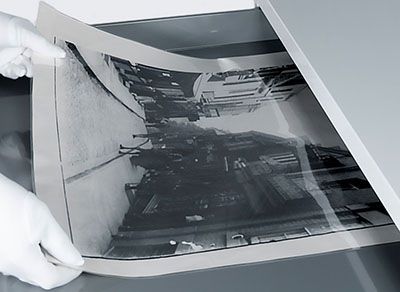Remember that dusty shoebox of old photos you found in Grandma's attic? Or that album from your parents' wedding that's starting to yellow at the edges? These aren't just pictures – they're time machines, portals to the past, and irreplaceable pieces of your family's story. But here's the kicker: they won't last forever unless we step in.
At Ente, we're all about preserving memories (digitally, that is), but we know that those physical snapshots hold a special place in your heart. So, for the sake of your great-grand kids, let's roll up our sleeves and dive into the world of photo preservation.

Preserving history
Need inspiration? Look no further than the impressive preservation efforts of the Library of Congress. Their Civil War photograph preservation project stands as a testament to the power of proper photo care.
"These photographs are national treasures," says Adrienne Lundgren, Senior Photograph Conservator at the Library of Congress. "They provide an incredible window into one of the most defining periods of American history."
The project has successfully conserved thousands of fragile 150-year-old images, making them accessible to the public while ensuring their longevity. Some key achievements include:
- Preserving over 7,000 glass plate negatives from the Civil War era
- Digitizing the entire collection for online access
- Developing new conservation techniques for 19th-century photographic processes
"Proper storage and digitization have been key to this success," Lundgren notes. "These techniques aren't just for national institutions – many can be applied by individuals preserving their own family photographs."
You can explore the preserved Civil War photographs on the Library of Congress website.
Source: https://lccn.loc.gov/2011649977
Inspired? Let's get started on preserving your own photographic treasures.
Preservation toolkit
1. Creating a safe
Your photos need a cozy, stable home. Aim for:
- Temperature: A cool 65-70°F (18-21°C)
- Humidity: A comfy 30-40%
- Location: Think interior closet, not damp basement or stuffy attic
Pro tip: Got a dehumidifier? Your photos (and your sinuses) will thank you!
2. Picking a folder
Protect your photos with:
- Acid-free, lignin-free boxes
- Polyethylene, polypropylene, or Mylar sleeves
- Archival-quality albums

3. Handling with care
- Channel your inner surgeon: clean hands or cotton gloves
- Hold photos by the edges like they're priceless artifacts (because they are!)
- No snacking while sorting! (Cheeto fingers are photo enemies)
4. Organizing
- Sort by date, person, or event – whatever tells your family's story best
- Label gently on the back with a soft pencil – your descendants will bless your name
- Create a digital catalog – spreadsheets can be cool
5. Displaying
- Use UV-protective glass in frames
- Keep photos out of direct sunlight
- Rotate your display to give all photos a break
Better yet, display a high-quality copy and keep the original safely stored. Best of both worlds!
6. Digital backups
Here's where Ente's expertise shines! While we're all about those physical originals, having a digital backup is like photo insurance.
- Scan at high resolution (at least 600 dpi)
- Save as TIFF for top quality
- Store copies in multiple places
For scanning, HackerNews recomends the Epson FastFoto FF-680W.

Special care
Different types of photos need different TLC:
- Black and White: Generally stable, but watch for silver mirroring
- Color: More prone to fading, so keep them in darker storage
- Polaroids: Super sensitive! Individual sleeves and dark storage are a must
- Negatives and Slides: Store separately in format-specific archival materials
First aid
For minor issues, try these quick fixes:
- Dusty photos? Gently brush with a soft, clean brush or use compressed air.
- Slightly torn? Apply archival tape to the back (never the front!).
- Curled edges? Flatten between acid-free paper with a light weight on top.
Always test on a less precious photo first!
Wrap up
Preserving your family photos might seem like a big task, but it's really about taking small, consistent steps to protect your legacy. Start with one album, one box, or even just that one precious photo of your grandparents on their wedding day.
Remember, at Ente, we're all about keeping memories safe in the digital realm. But we know that those physical photos hold a special kind of magic. By following this guide, you're ensuring that the smiles, the awkward hairstyles, and the love captured in those images will continue to tell your family's story for generations to come.
Note: This blog post is for informational purposes only. While we strive to provide accurate and up-to-date information, please consult with a professional conservator for specific preservation needs, especially for valuable or severely damaged photographs.